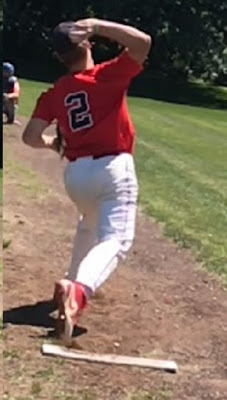These pitching elements drive your success.
These basic elements that go into every pitch result.
1. Your Subconscious – To
keep your body in balance, your mind is programmed to automatically rearranges
your body parts.
2. Your Physiological Factors
– When your mind rearranges your body parts, you’re hardwired to always react
to the same conditions in the same way.
3. Your Psychological Makeup –
After seeing an unacceptable result, do you adjust to your last pitch or stick
with your plan?
These tools become your guide
to a sustainable motion known to produce sustainable results.
Your subconscious patterns produce sustainability.
To produce sustainably
excellent results all the time, you plan your subconscious reactions around
your physiological patterns. Your sustainable results give you one option after
every pitch … stick with what you do.
Your body language is the interplay
between your shoulders and hips. By comparing your body language to the patterns
proven to produce sustainably elite results, you systematically close the gaps
between the two. In the end, you walk away with a set of repeatable movements
that’ll deliver each pitch into our Catcher’s target.
Knowing your actions are
sustainable, anytime you see an unacceptable result, you merely go back to the
movements you know will produce the results you expect.
By merely thinking about the
right combination of movements, your sustainably elite results become an
involuntary reflex.
If you need help finding the
right sequence of actions that’ll produce the results you need to move up the baseball
ladder, contact us for help.
Skip Fast
Expert Pitching Coach
Professional Pitching Institute
Professional Pitching Institute
E-Mail: skip@propitchinginstitute.com
Cell or Text: 856-524-3248
Cell or Text: 856-524-3248
Copyright © 2018






